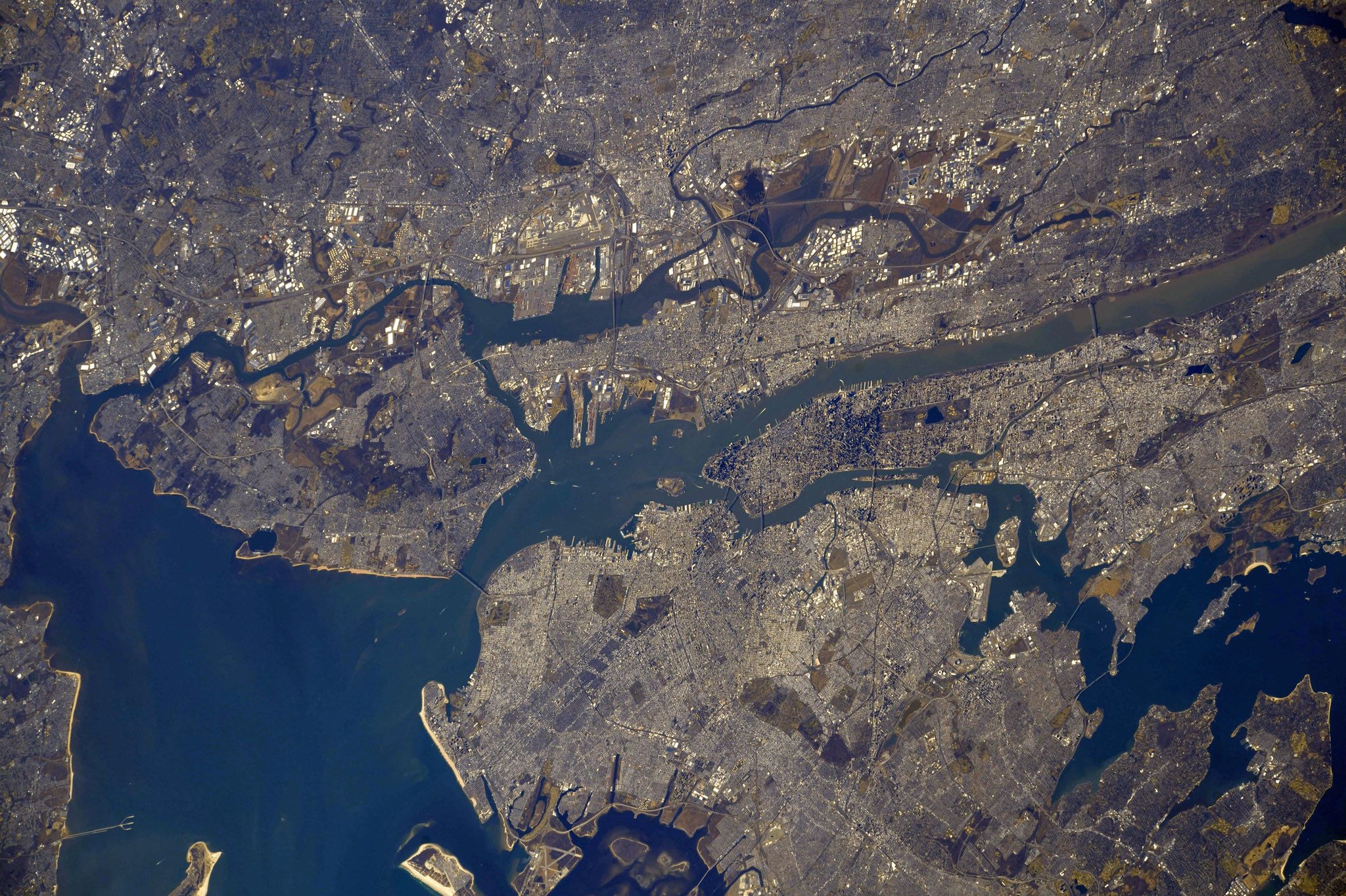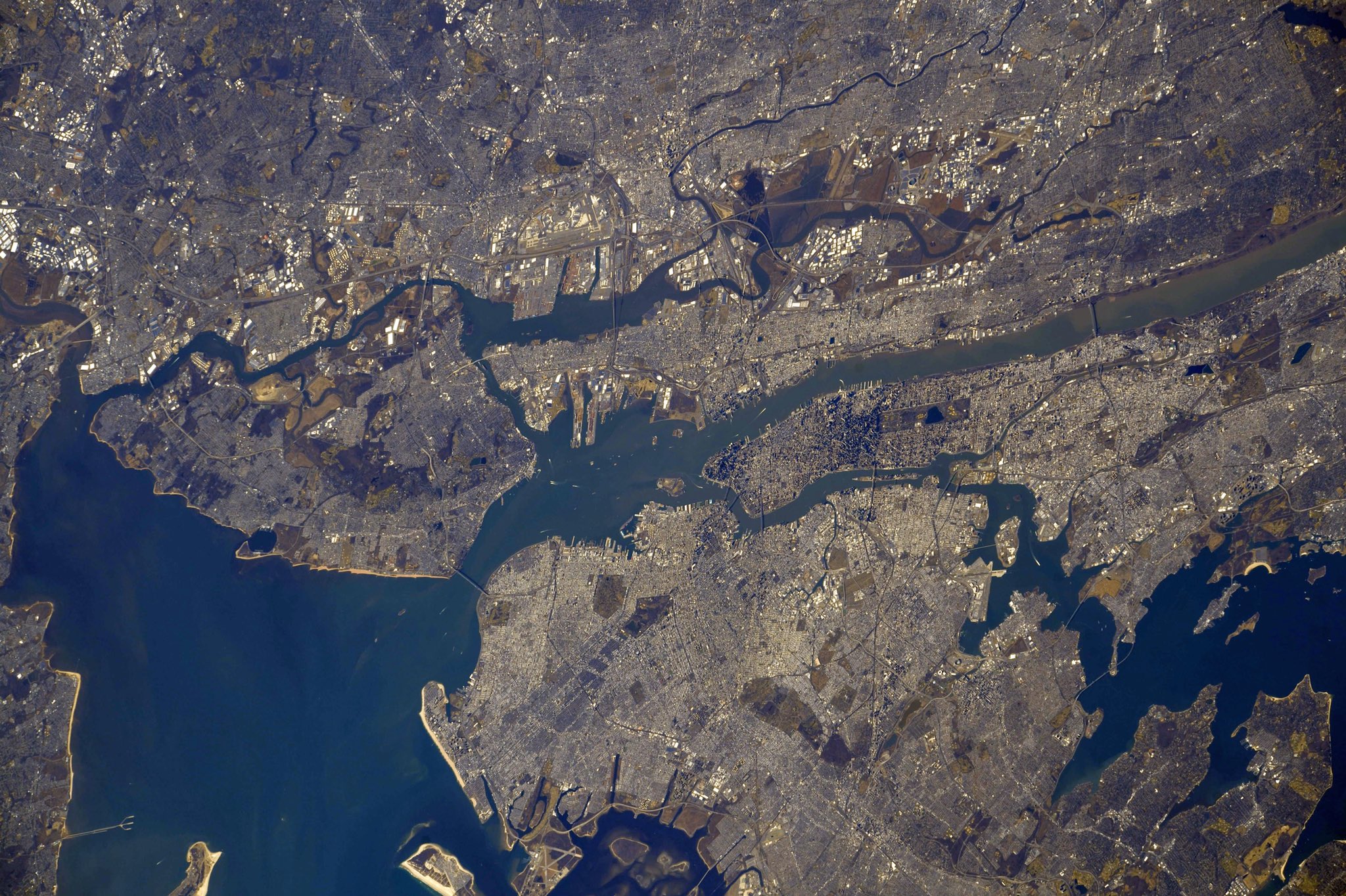The attacks of Sept. 11, 2001 were a national tragedy that resulted in a staggering loss of life and a significant change in American culture. Each year, we pause and remember. Beyond honoring the Americans who died that day, NASA also assisted FEMA in New York in the days afterward, and remembered the victims by providing flags flown aboard the Space Shuttle to their families.
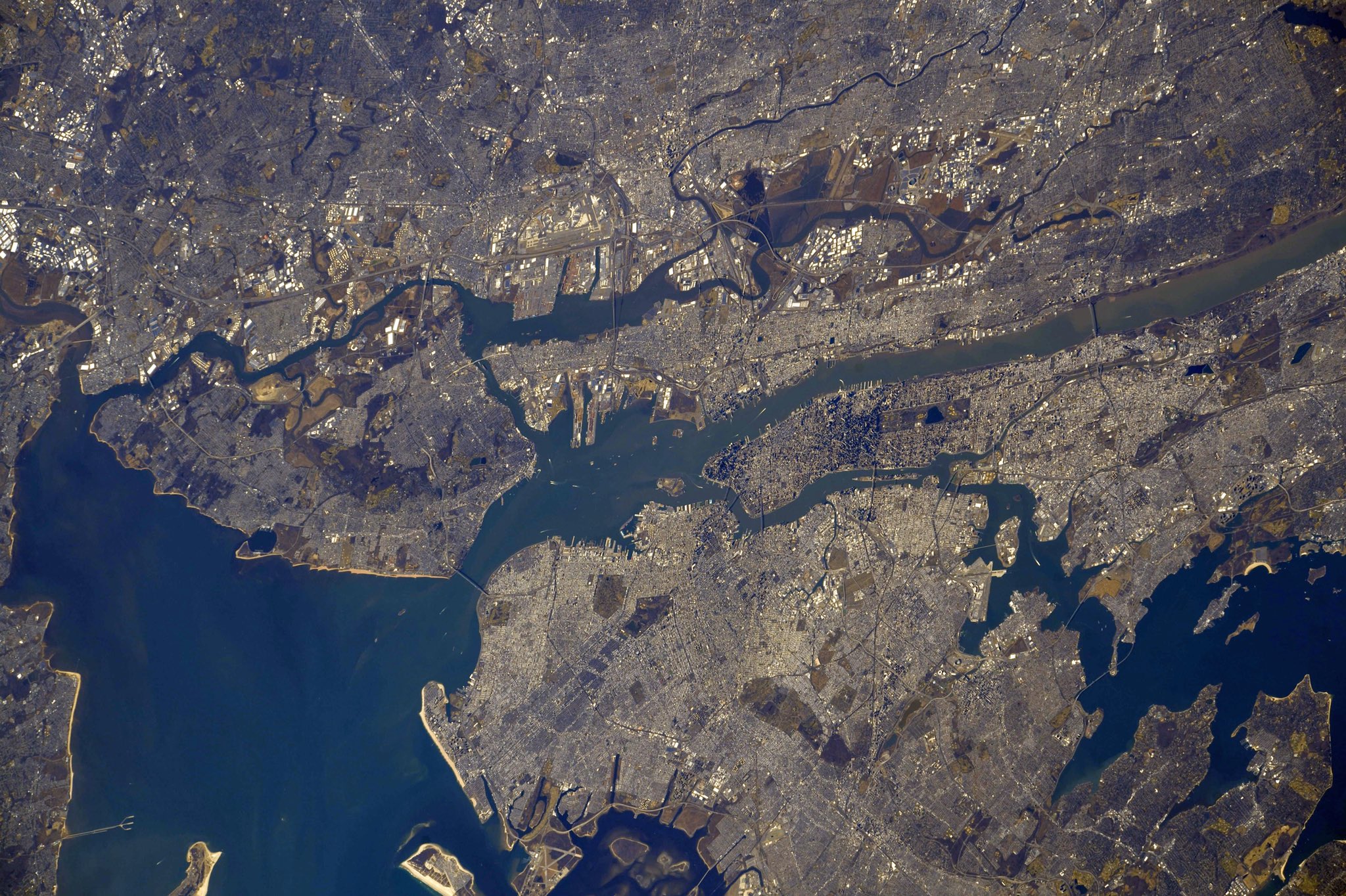 NASA astronaut Jessica Meir photographed the New York City area from the International Space Station in March 2020. Credits: NASA
NASA astronaut Jessica Meir photographed the New York City area from the International Space Station in March 2020. Credits: NASA 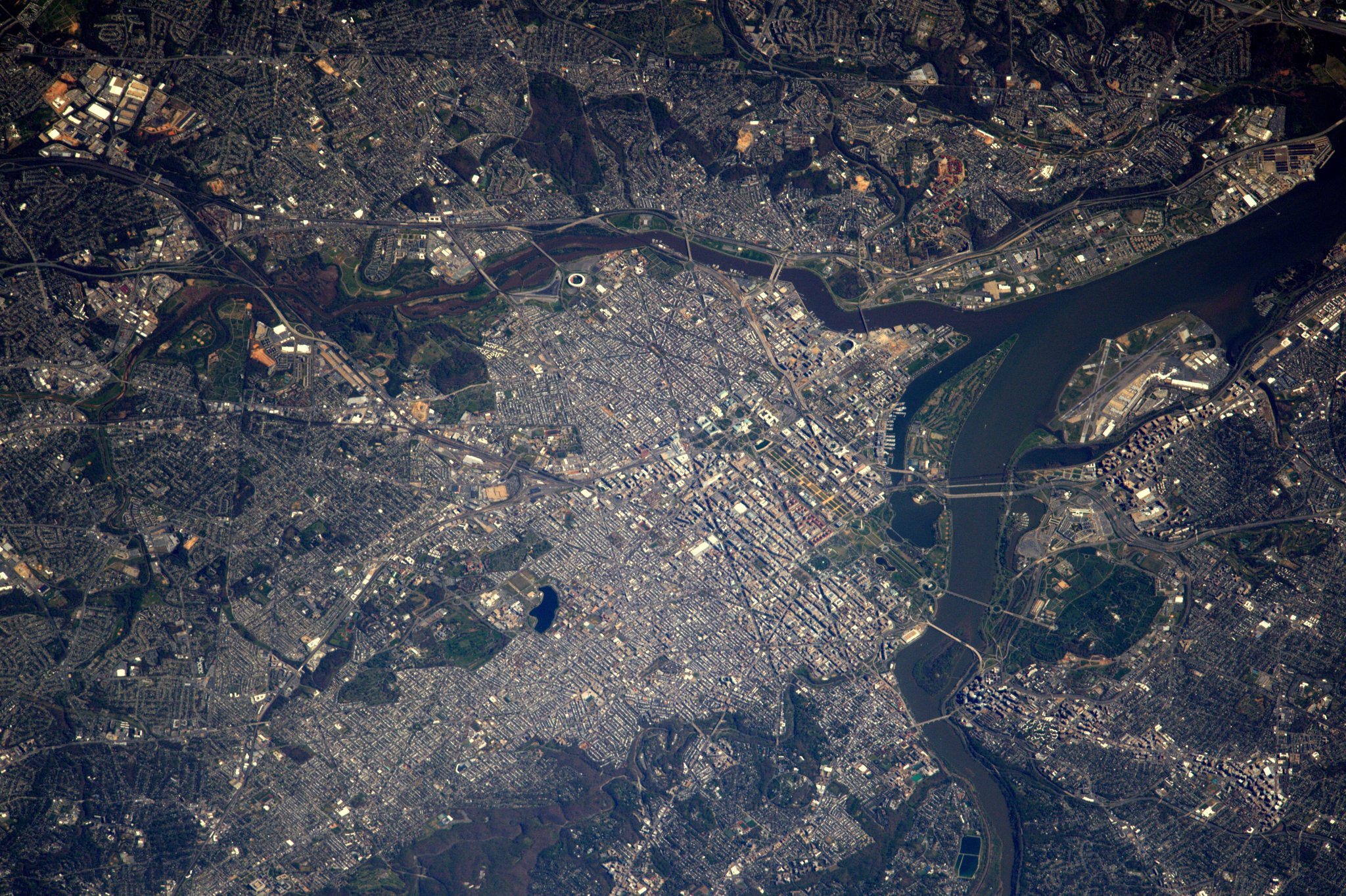 European Space Agency astronaut Thomas Pesquet photographed the city Washington D.C. and the surrounding area on April 11, 2017, from his vantage point aboard the International Space Station. Credits: ESA/NASA The smoke seemed to have an odd bloom to it at the base of the column that was streaming south of the city. After reading one of the news articles we just received, I believe we were looking at NY around the time of, or shortly after, the collapse of the second tower. How horrible…
European Space Agency astronaut Thomas Pesquet photographed the city Washington D.C. and the surrounding area on April 11, 2017, from his vantage point aboard the International Space Station. Credits: ESA/NASA The smoke seemed to have an odd bloom to it at the base of the column that was streaming south of the city. After reading one of the news articles we just received, I believe we were looking at NY around the time of, or shortly after, the collapse of the second tower. How horrible… 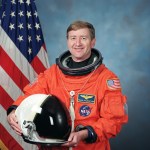 FRANK CULBERTSON
FRANK CULBERTSON
NASA Astronaut (Former), the only American off the planet
Expedition 3 Commander Frank Culbertson was aboard the International Space Station at the time of the attacks, and the only American on the crew. As soon as he learned of the attacks, he began documenting the event in photographs because the station was flying over the New York City area. He captured incredible images in the minutes and hours following the event. From his unique vantage point in space, he recorded his thoughts of the world changing beneath him.
Watch: Culbertson Remembers 9/11
The following day, he posted a public letter that captured his initial thoughts of the events as they unfolded. “The world changed today. What I say or do is very minor compared to the significance of what happened to our country today when it was attacked.”
Upon further reflection, Culbertson said, “It’s horrible to see smoke pouring from wounds in your own country from such a fantastic vantage point. The dichotomy of being on a spacecraft dedicated to improving life on the earth and watching life being destroyed by such willful, terrible acts is jolting to the psyche, no matter who you are.”
Read astronaut Frank Culbertson’s full letter from September 11, 2001
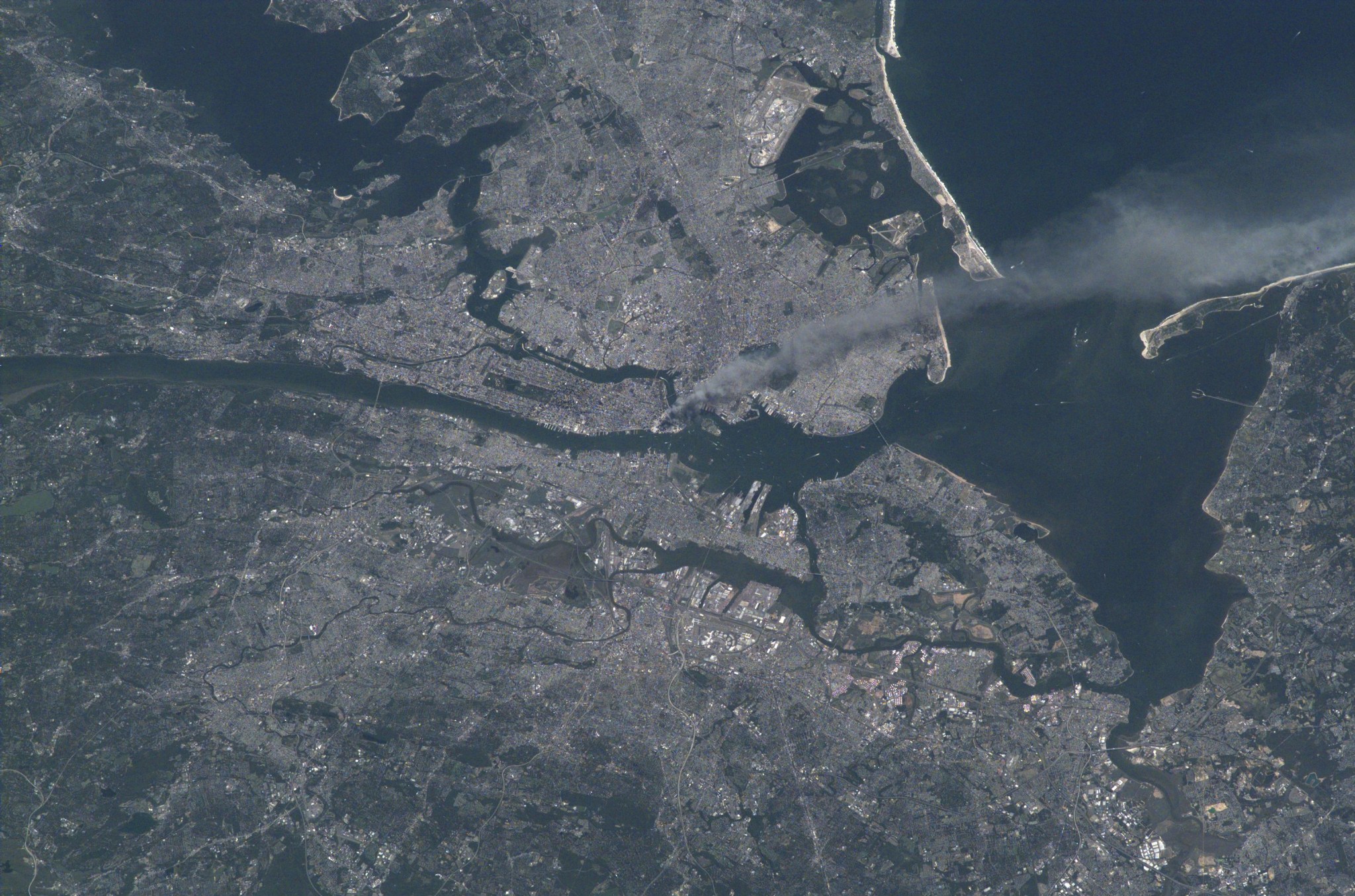 Visible from space, a smoke plume rises from the Manhattan area after two planes crashed into the towers of the World Trade Center. This photo was taken of metropolitan New York City (and other parts of New York as well as New Jersey) the morning of September 11, 2001.Credits: NASA NASA Science Programs Monitor the Air
Visible from space, a smoke plume rises from the Manhattan area after two planes crashed into the towers of the World Trade Center. This photo was taken of metropolitan New York City (and other parts of New York as well as New Jersey) the morning of September 11, 2001.Credits: NASA NASA Science Programs Monitor the Air
NASA science programs were called into action after Sept. 11, 2001, as the agency worked with FEMA to fly sensors over the affected areas on aircraft looking for aerial contaminants and used satellite resources to monitor from above.
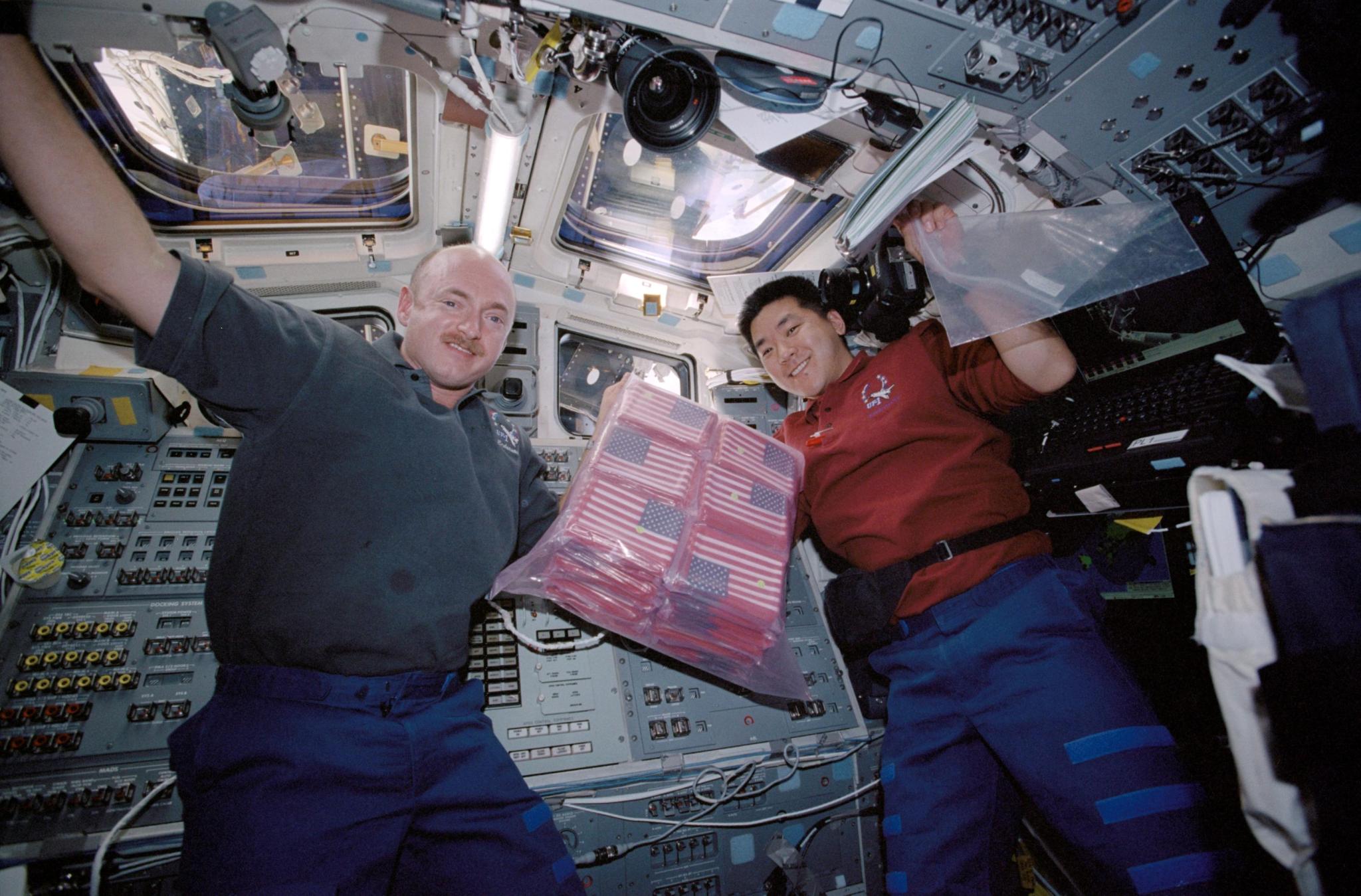 View of New York City from orbit on Sept. 11, 2001. Credits: NASA/Frank Culbertson Flags for Heroes and Families
View of New York City from orbit on Sept. 11, 2001. Credits: NASA/Frank Culbertson Flags for Heroes and Families
NASA flew nearly 6,000 4 by 6 inch flags on Endeavour’s flight during STS-108 to honor the victims of the terrorist attacks in New York, Washington, D.C. and Pennsylvania. Students working at Johnson Space Center in Houston, Texas assembled the commemorative packages, including the U.S. flags flown in space, to be presented to relatives of the victims. Distribution began on June 14, 2002, National Flag Day, at a ceremony held at the American Museum of Natural History’s Rose Center for Earth and Space in New York.
“The ‘Flags for Heroes and Families’ campaign is a way for us to honor and show our support for the thousands of brave men and women who have selflessly contributed to the relief and recovery efforts,” said then-NASA Administrator Dan Goldin. “The American flags are a patriotic symbol of our strength and solidarity, and our Nation’s resolve to prevail.”
“NASA wanted to come up with an appropriate tribute to the people who lost their lives in the tragic events of September 11,” added Goldin. “America’s space program has a long history of carrying items into space to commemorate historic events, acts of courage and dramatic achievements. ‘Flags for Heroes and Families’ is a natural extension of this ongoing outreach project.”
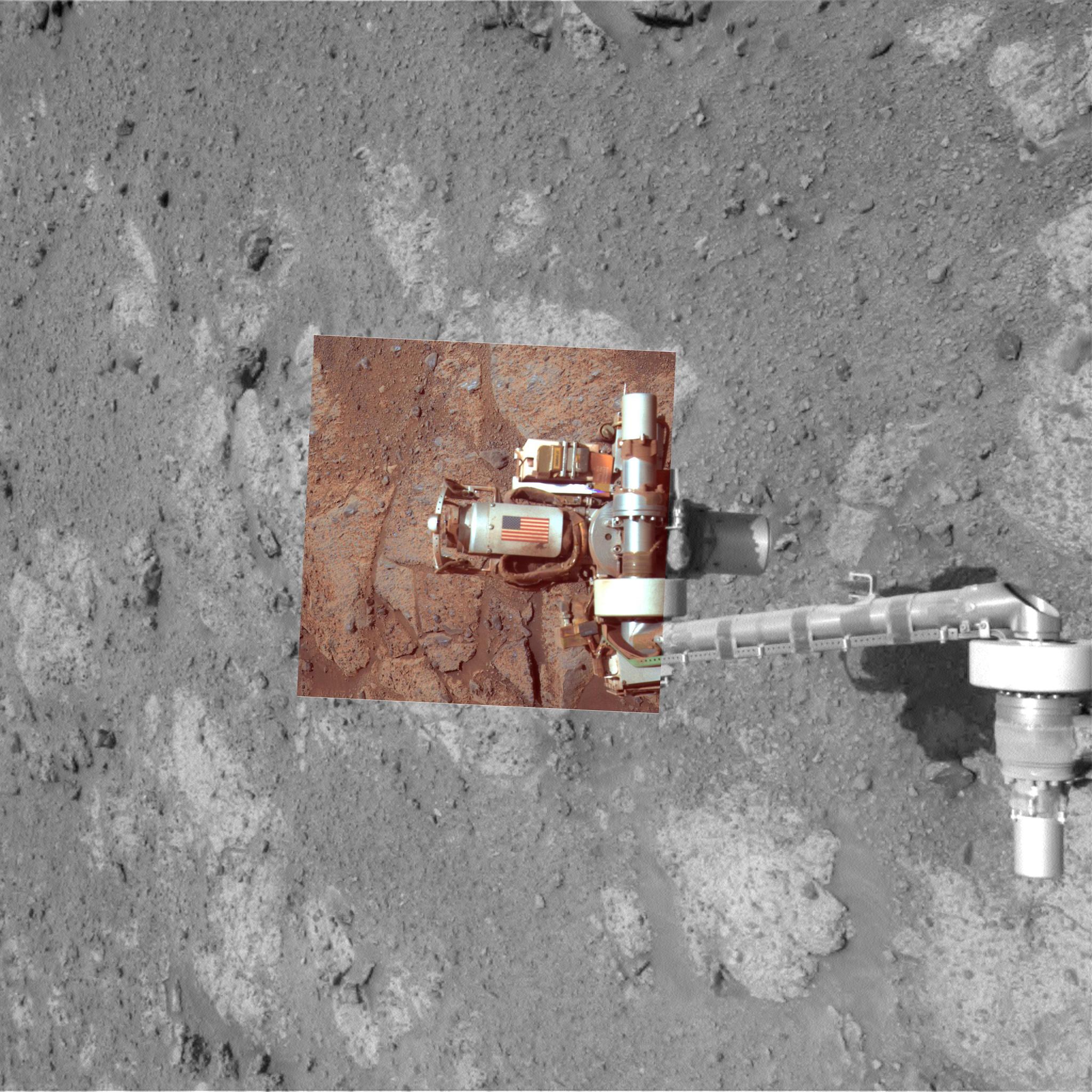 View of New York City from orbit on Sept. 11, 2001. Credits: NASA/Frank Culbertson Commemoration Goes to Mars
View of New York City from orbit on Sept. 11, 2001. Credits: NASA/Frank Culbertson Commemoration Goes to Mars
In September 2001, Honeybee Robotics employees in lower Manhattan were building a pair of tools for grinding weathered rinds off rocks on Mars, so that scientific instruments on NASA’s Mars Exploration Rovers Spirit and Opportunity could inspect the rocks’ interiors.
That month’s attack on the twin towers of the World Trade Center, less than a mile away, shook the lives of the employees and millions of others.
Work on the rock abrasion tools needed to meet a tight schedule to allow thorough testing before launch dates governed by the motions of the planets. The people building the tools could not spend much time helping at shelters or in other ways to cope with the life-changing tragedy of Sept. 11. However, they did find a special way to pay tribute to the thousands of victims who perished in the attack.
An aluminum cuff serving as a cable shield on each of the rock abrasion tools on Mars was made from aluminum recovered from the destroyed World Trade Center towers. The metal bears the image of an American flag and fills a renewed purpose as part of solar system exploration.
One day, both rovers will be silent. In the cold, dry environments where they have worked on Mars, the onboard memorials to victims of the Sept. 11 attack could remain in good condition for millions of years.
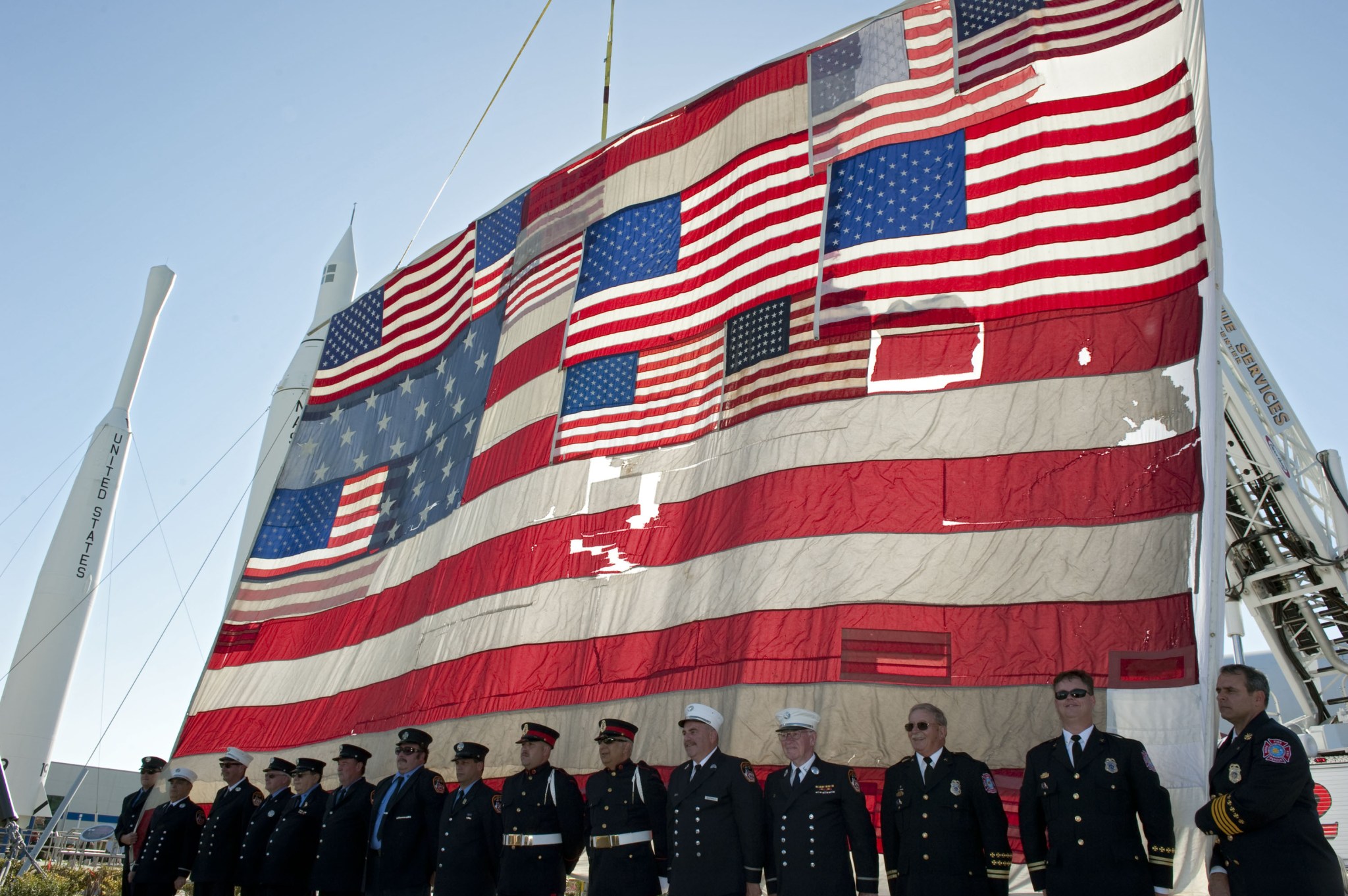 The National 9/11 Flag was raised over the Rocket Garden at the Kennedy Space Center Visitor Complex after Florida’s contribution was added. Credits: NASA/Kim Shiflett NASA Kennedy Adds Florida Touch to Sept. 11 Flag
The National 9/11 Flag was raised over the Rocket Garden at the Kennedy Space Center Visitor Complex after Florida’s contribution was added. Credits: NASA/Kim Shiflett NASA Kennedy Adds Florida Touch to Sept. 11 Flag
The contributions of NASA and Kennedy Space Center were stitched into the fabric of one of the nation’s most recognizable symbols, when flags from Florida’s Spaceport were sewn into an American Flag recovered near ground zero following the Sept. 11, 2001, attacks.
“A few days after the collapse of the World Trade Center this flag was hanging on a scaffolding at 90 West Street, which was a building directly south of the World Trade Center that was heavily damaged when the south tower collapsed,” said Jeff Parness, director, founder and chairman of the “New York Says Thank You Foundation.”
The flag went on to become one of the most enduring symbols of the recovery from the attack. The National 9/11 Flag is a permanent part of the collection of the National September 11 Memorial Museum at the World Trade Center site. There, America’s flag can evoke a sense of pride, unity and hunger to keep achieving greatness, just as the nation’s space program has for more than half a century.

